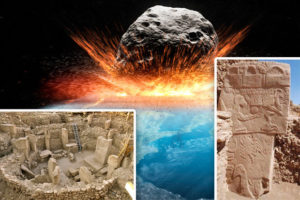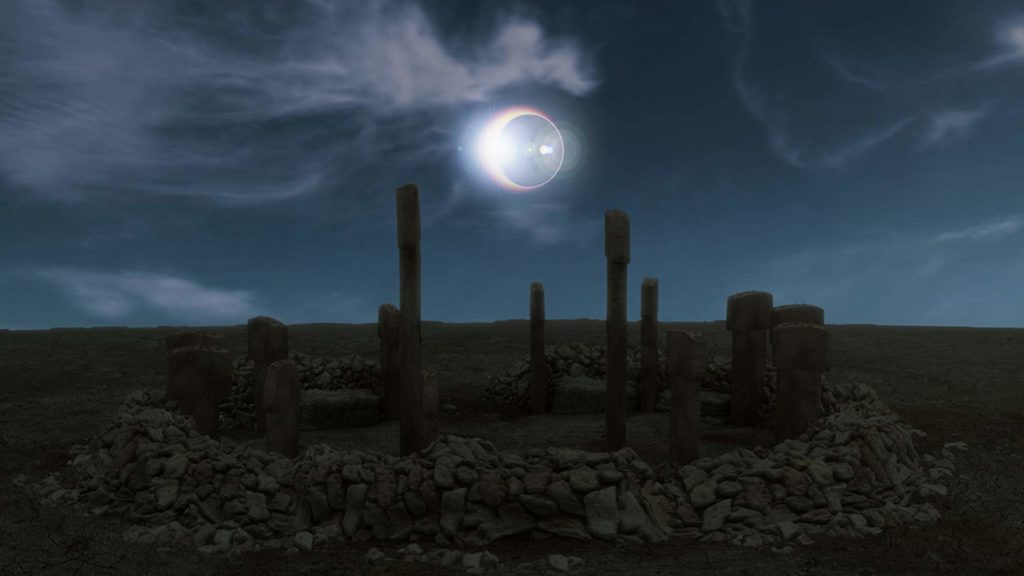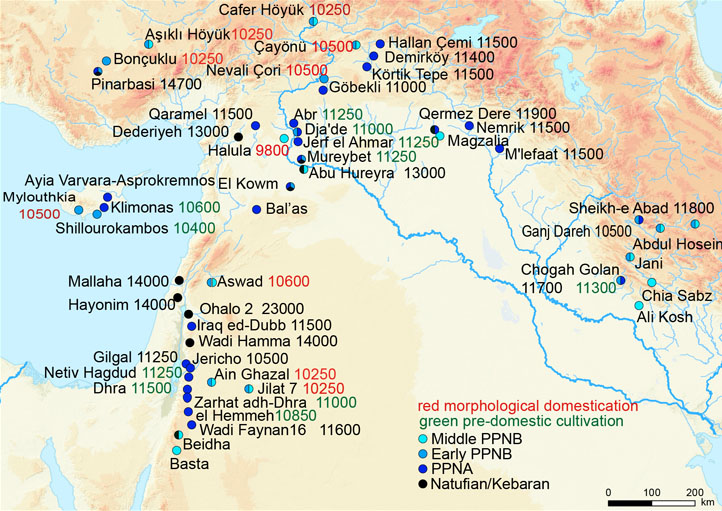 Is Gobekli Tepe the site that overturns all current models of humanity’s prehistory, validates the Lost Civilization scenario, and embarrasses the pants off mainstream archaeologists? Well, no.
Is Gobekli Tepe the site that overturns all current models of humanity’s prehistory, validates the Lost Civilization scenario, and embarrasses the pants off mainstream archaeologists? Well, no.
Far from destroying the current model of the human past, the ancient site of Gobekli Tepe in Turkey enlarges our window onto a critical era, the time of transition from food gathering to food production in one of the earliest nuclear zones for the rise of agriculture and complex societies. It’s an important site, all right, but not for the reasons put forward by alternos like, say, Graham Hancock and his colleagues.
Here is the dominant alterno version, the one without aliens: Gobekli Tepe, a stunning sprawl of sophisticated megalithic temples aligned to the stars, sprang up out of nowhere in a barren, waterless area inhabited only by primitive hunter-gatherer bands, who then proceeded to invent agriculture. As it was clearly impossible for hunter-gatherers to pull off such astounding feats of invention—religion, astronomy, architecture, and agriculture—then a transfer of technology from a more advanced group must have been involved. The proposed candidates are survivors of a mighty Lost Civilization destroyed without trace by a barrage of comet debris 12,800 years ago, the same Lost Civilization immortalized by Plato as Atlantis and commemorated in coded form in the monuments of Egypt, Mesopotamia, the Maya, and so forth. Mainstream archaeologists, confounded by this falsification of their models, are either trying to suppress the truth about Gobekli Tepe, or explain it away.
Except, dammit, archaeologists are not confounded by Gobekli Tepe; we’re excited and intrigued. And no Lost Civilization, no shell-shocked survivors of its devastation, are required to account for the site’s impressive features. To show why, however, it is necessary to put the site into context and clear up some serious misconceptions that underlie the alternos’ scenario. The most fundamental of these misconceptions involve the origins of agriculture and the nature of hunter-gatherers, so we’ll address those before moving on to claims that are specific to the site itself.
The origins of agriculture
The alternos speak of the “invention” of agriculture, as if it were an event. In fact, it was a process, and a long one. It involved the domestication of both plant and animal species, a kind of semi-accidental artificial selection which gradually bred forms that were morphologically different from the original wild species. Without first developing those domesticated species—a process spread out over millennia in some cases, with a lot of local variability—the slide into true agriculture could not be made. To speak of agriculture being “invented” is a nonsense.
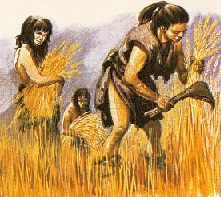 But how, then, was it accomplished? According to the archaeological record, it was via a long period of “preadaptive” behaviours on the part of hunter-gatherers in certain favourable areas: corralling wild herd animals, collecting the plumpest and most shatter-proof ears of wild grain, tilling the soil, weeding out or burning off undesirable plants to encourage the productive ones—in short, cultivation. At the same time as this was going on, the archaeological record shows an intensification of both population and land-use, plus a marked tendency towards permanent settlements, all well before the segue into true agriculture.
But how, then, was it accomplished? According to the archaeological record, it was via a long period of “preadaptive” behaviours on the part of hunter-gatherers in certain favourable areas: corralling wild herd animals, collecting the plumpest and most shatter-proof ears of wild grain, tilling the soil, weeding out or burning off undesirable plants to encourage the productive ones—in short, cultivation. At the same time as this was going on, the archaeological record shows an intensification of both population and land-use, plus a marked tendency towards permanent settlements, all well before the segue into true agriculture.
How does this relate to Gobekli Tepe? GT is an Anatolian site, situated in the Fertile Crescent that arches from the Levant up through Anatolia and the Upper Euphrates and south into Lower Mesopotamia, collectively one of the earliest areas for the adoption of true agriculture. The intensification mentioned above began in the Epipaleothic period, a transitional phase after the onset of deglaciation, with a blip during the Younger Dryas, to be discussed below; continued through the PPNA (Pre-Pottery Neolithic A); and made the transition into true agriculture in the PPNB (Pre-Pottery Neolithic B).
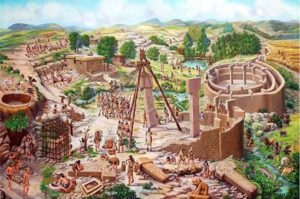 Gobekli Tepe’s lowest level, with the round stone structures and large T-shaped pillars, dates reliably to the PPNA period, when the activities that would eventually evolve into agriculture and animal husbandry were already underway. The middle level, with the smaller squared structures, dates to the early PPNB. The PPNB appearance of domesticated einkorn nearby is a fine indicator that pre-domestication cultivation was indeed being practiced in the area by the time Gobekli Tepe was founded, in combination with hunting and gathering of other wild edibles. Until recently, the PPN periods were much better-known from the Levant, and Anatolia was considered a bit of a backwater. Gobekli Tepe is only one of a number of sites in Anatolia and central Turkey that are changing that view.
Gobekli Tepe’s lowest level, with the round stone structures and large T-shaped pillars, dates reliably to the PPNA period, when the activities that would eventually evolve into agriculture and animal husbandry were already underway. The middle level, with the smaller squared structures, dates to the early PPNB. The PPNB appearance of domesticated einkorn nearby is a fine indicator that pre-domestication cultivation was indeed being practiced in the area by the time Gobekli Tepe was founded, in combination with hunting and gathering of other wild edibles. Until recently, the PPN periods were much better-known from the Levant, and Anatolia was considered a bit of a backwater. Gobekli Tepe is only one of a number of sites in Anatolia and central Turkey that are changing that view.
Hunter-Gatherers in the Epipaleothic and PPN periods.
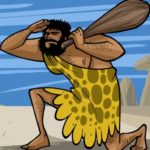 Tiny bands of brutish wanderers scavenging the prehistoric landscape for wild game and wild plants, only a few steps ahead of starvation—that is the popular (mis)conception of hunter-gatherers, and the vision that is specifically pushed by the alternos. However, hunter-gatherers of Gobekli Tepe’s era, while still subsisting by harvesting wild plants and hunting wild animals, were already living in both seasonal and permanent settlements. Here’s a thumbnail sketch of events leading up to the PPNA in the Levant, where they are best documented.
Tiny bands of brutish wanderers scavenging the prehistoric landscape for wild game and wild plants, only a few steps ahead of starvation—that is the popular (mis)conception of hunter-gatherers, and the vision that is specifically pushed by the alternos. However, hunter-gatherers of Gobekli Tepe’s era, while still subsisting by harvesting wild plants and hunting wild animals, were already living in both seasonal and permanent settlements. Here’s a thumbnail sketch of events leading up to the PPNA in the Levant, where they are best documented.
The first permanent settlements date back to the pleasant warming phase that followed the last glacial maximum, an Epipaleolithic phase known as the Early Natufian (14.5-12.8 kya). The settlements featured oval structures up to several metres across, dug partly into the ground and stabilized with limestone masonry retaining walls, plus some use of stone slabs in floors, hearths, and storage facilities. The larger settlements housed perhaps 50-150 living persons, plus a fair number of dead ones under the floors. It was a good time for hunter-gatherers.
But along came the Younger Dryas, about 13 kya. Temperatures dropped 3-6C on average, rainfall diminished (though still remaining above current levels), vegetation patterns and animal migration routes changed. The hunter-gatherers of the Late Natufian responded by going back on the prowl—populations returned to a more mobile subsistence strategy, though seasonal and some permanent settlements persisted. When the Younger Dryas wound down (by about 11,600 kya in Southwest Asia), the trend towards sedentation picked up speed again, settlements multiplied in size and number, and solid markers of pre-domestication cultivation showed up in the archaeological record. This is the PPNA, the era of Gobekli Tepe.
What else was happening in this period? All over the Levant and up into Anatolia, large-scale communal structures began to appear in these larger and more populous settlements. The first of a series of massive stone structures in Tell Qaramel, Syria, is roughly contemporary with the claimed age of the earliest structures at Gobekli Tepe, as is the “amphitheatre” at Wadi Faynan Site 16. Somewhat later, the PPNA inhabitants of Jericho, founded in the Late Natufian, built a 28-foot tower and, yes, a massive city wall; the PPNA levels at Jerf al-Ahmar, Tell ‘Abr 3, Tell Ja’dat al-Mughara and many other sites include kiva-like structures that certainly required the organization of communal labour, and are thought to be foci of communal or ritual activities. All – all – of these sites are pre-agricultural.
In short, Gobekli Tepe had a lot of company. It did not spring up out of nowhere.
The hunter-gatherers who built it were not the primitive wanderers envisioned by the alternos. They most certainly did not invent agriculture, though (like the rest of the Fertile Crescent) they were on the trajectory towards domesticated food 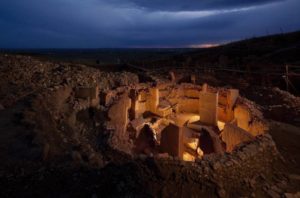 production. Gobekli Tepe is special and exciting, but it is not particularly anomalous.
production. Gobekli Tepe is special and exciting, but it is not particularly anomalous.
But what about the T-shaped pillars? The artworks? The amazing sprawl of stone structures? The lack of a permanent population? The mysterious back-filling of the entire site? The astronomical orientations and the birth of religion? All those features that make are supposed to make archaeologists squirm? We’ll have a look at those questions in Part 2.
Related links:
Small game, the Younger Dryas, and the transition to agriculture in the southern Levant
Epipaleolithic Subsistence Intensification in the southern Levant: The Faunal Evidence.

